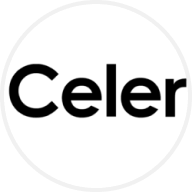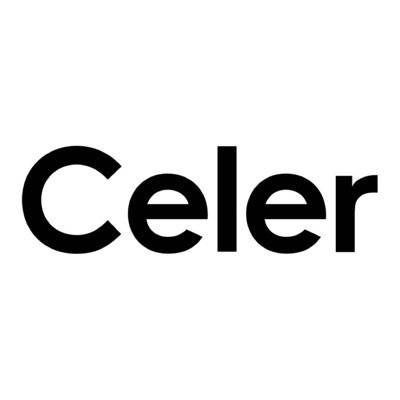Celer Network price
in EURAbout Celer Network
Celer Network’s price performance
Celer Network on socials
Guides

Celer Network FAQ
The Celer Network is a networked system that offers Layer 2 solutions for blockchain applications while relying on the Layer 1 blockchain's security. CELR is the name and ticker of the utility token of Celer's ecosystem.
Celer's main objective is the mass adoption of blockchain, so it offers fast, accessible, secure off-chain transactions for payments and generalized off-chain smart contracts. Celer has gathered over 1 million gaming, blockchain, and DeFi users.
Easily buy CELR tokens on the OKX cryptocurrency platform. One available trading pair in the OKX spot trading terminal is CELR/USDT.
You can also buy CELR with over 99 fiat currencies by selecting the "Express buy" option. Other popular crypto tokens, such as Bitcoin (BTC), Ethereum (ETH), Tether (USDT), and USD Coin (USDC), are also available.
Swap your existing cryptocurrencies, including XRP (XRP), Cardano (ADA), Solana (SOL), and Chainlink (LINK), for CELR with zero fees and no price slippage by using OKX Convert.
To view the estimated real-time conversion prices between fiat currencies, such as the USD, EUR, GBP, and others, into CELR, visit the OKX Crypto Converter Calculator. OKX's high-liquidity crypto exchange ensures the best prices for your crypto purchases.
Dive deeper into Celer Network
Celer Network is a Layer 2 solution that provides fast, secure, affordable blockchain applications on blockchains like Ethereum and Polkadot. CELR is the name and ticker symbol for the native token of the project.
The project's core architecture relies on three elements:
- cOS: The main development framework.
- cRoute: A fully decentralized routing system of multiple chains and layers that enable higher operations capacity.
- cChannel: The bottom layer of the network that enables smooth transactions within the ecosystem.
As a true Layer 2 platform, Celer's security relies on the Layer 1 blockchain. One of the critical features of the Celer ecosystem is Layer2.finance, which tackles decentralized finance's (DeFi) most significant challenges of providing its users with both easy accessibility and significantly lower transaction fees.
There is also a multi-chain cross-layer asset bridge called the cBridge, which allows instant, trustless, Any-to-Any value transfers within and across Ethereum's Layer 2 chains at a low cost. Celer's open-source platform, with a complete set of SDKs and low rent, allows developers to build fast and experiment with projects.
Three tightly coupled components build the so-called "cEconomy" and are as follows:
- State Guardian Network (SGN): Users can stake CELR in the State Guardian Network to perform certain governance operations.
- Proof of Liquidity Commitment (PoLC): CELR can be used to maintain the liquidity pool in proof of liquidity commitment, a virtual mining process.
- Liquidity Backing Auction (LiBA): Off-chain service providers can raise liquidity through crowdlending.
CELR tokens can also be used to pay service and transaction fees for off-chain services. On July 7, 2019, Celer Network launched its alpha-mainnet, Cygnus, the first Generalized State Channel Network.
The platform combines State Channel and Layer-2 Rollup to enable various applications like DeFi (layer2.finance), micropayment, and gaming. Besides the alpha-mainnet, Celer has already successfully launched two testnets: Centauri with cWallet in October 2018 and Sirius with CelerX in February 2019.
CELR price and tokenomics
CELR has a maximum supply of 10 billion tokens. CELR’s circulating supply is distributed as follows:
- 11.5 percent was allocated toward seed sales.
- 15.5 percent went toward private sales.
- 6 percent of CELR was for the launchpad sale.
- 18.3 percent was allocated to the team.
- 1.7 percent was reserved for advisors.
- 17 percent for the foundation.
- 5 percent for marketing and ecosystem.
- 25 percent was set aside for mining rewards.
The CELR economy model is a system of staking that provides security, liquidity, and smooth connectivity for the platform. The CELR price naturally depends on how the platform performs and how much CELR is staked. Its partnerships also influence the CELR charts.
About the founders
Celer Network was founded in 2018 by a team of highly skilled engineers, each with a Ph.D. in Computer Science from renowned institutions such as the University of California, Berkeley (UC Berkeley), and the Massachusetts Institute of Technology (MIT).
Celer network's team includes Mo Dong, Junda Liu, Xiaozhou Li, and Qingkai Liang. Mo Dong completed his Ph.D. in computer science and worked in technical roles in different companies before founding Celer Network and CelerX.
Liang, the other co-founder of CelerX, had completed his Ph.D. in machine learning and computer networks. Liu has a Ph.D. in computer networks and has worked in engineering roles at Google for over six years.
Celer has formed partnerships with well-known names, such as Polkadot, StarkWare, and Automata, and strategic partnerships with Pantera, DHVC, Stable, BlockVC, Matrix, Fenbushi Capital, and more.
Disclaimer
OKX does not provide investment or asset recommendations. You should carefully consider whether trading or holding digital assets is suitable for you in light of your financial condition. Please consult your legal/tax/investment professional for questions about your specific circumstances. For further details, please refer to our Terms of Use and Risk Warning. By using the third-party website ("TPW"), you accept that any use of the TPW will be subject to and governed by the terms of the TPW. Unless expressly stated in writing, OKX and its affiliates (“OKX”) are not in any way associated with the owner or operator of the TPW. You agree that OKX is not responsible or liable for any loss, damage and any other consequences arising from your use of the TPW. Please be aware that using a TPW may result in a loss or diminution of your assets. Product may not be available in all jurisdictions.








































